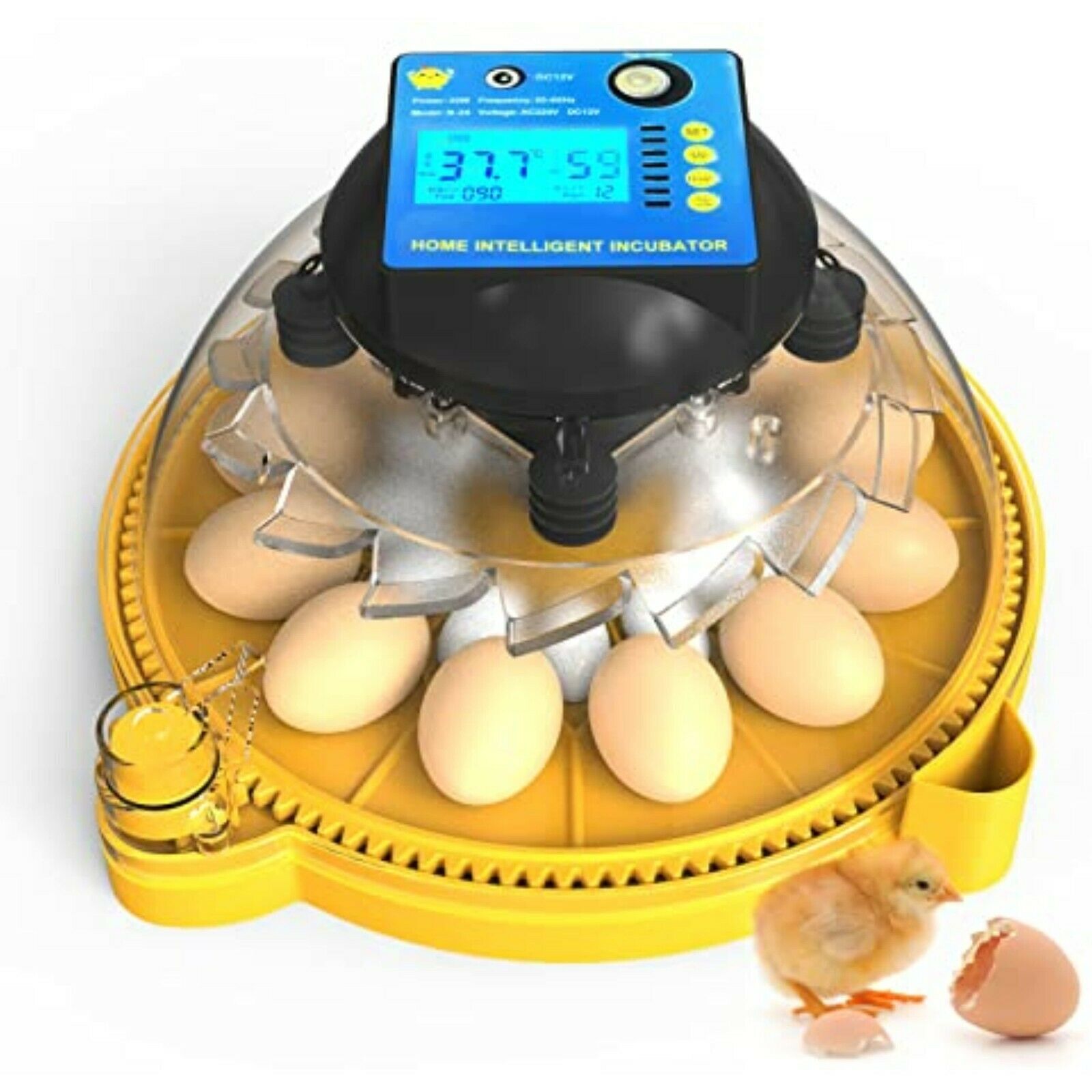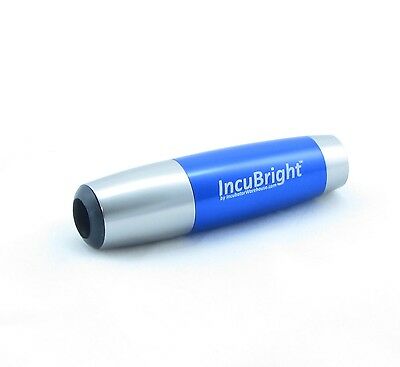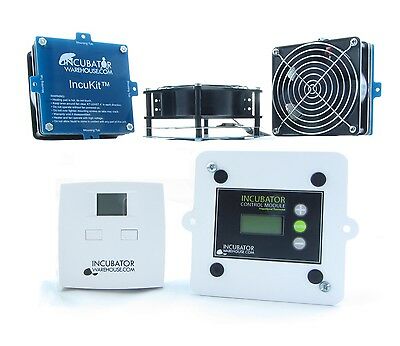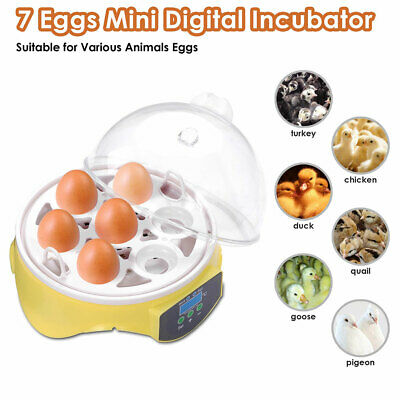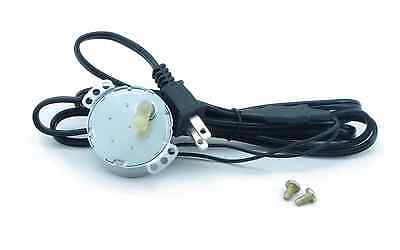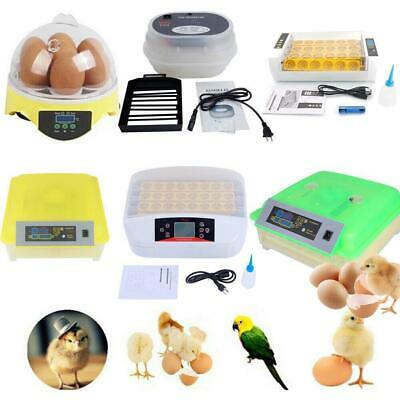-40%
Incubator 24 Egg Hatcher Chicken Duck Humidity Turner Digital Temperature
$ 36.93
- Description
- Size Guide
Description
STABLE TEMPERATURE -The temperature difference of the whole egg incubator is small. It is suitable for incubating all kinds of eggs. Automatic water intake, no need to open the cover to add water, reduce temperature and humidity loss and improve the hatching effect.AUTOMATIC EGG TURNER: Automatically turn the eggs once in 90-120 minutes (the machine automatically turns the eggs and hatches without manual operation). The direction of turning the egg is automatically determined by the computer.
DIGITAL DISPLAY: The intelligent incubator thermometer has a clear and intuitive temperature digital display, no need to buy additional hygrometer and thermometer to monitor.
BUILT-IN EGG CANDLER: No need to buy additional egg candler to observe the development of eggs. Suitable for hatching eggs, duck eggs, quail eggs, bird eggs, goose eggs, etc.
LARGE CAPACITY: This fully automatic chicken egg incubator is suitable for breeding poultry eggs-12 chicken eggs and 12 quail eggs,also suitable for hatching duck, bird, goose, parrot etc.
Product Description
egg incubator Instructions
Step 1: Place a sink protection net to prevent the chicks from drowning after they get out of their shells.
Step 2: Choose a suitable egg tray and place it on the bottom shell of the machine, with the patterned road surface facing up.
Step 3: First place the host and check whether the edges are tightly buckled. Next, add 100ML of water, and connect the adapter for 3-4 hours of test temperature operation.
Step 4: After the temperature test is completed, put the breeding eggs in the egg tray and lay them flat according to the position of the egg pit.
Step 5: Fasten the host and the bottom shell, turn on the power, and click the add button to test the egg turning status of the machine (the default state is automatically turning eggs). After the test is normal, it enters the normal incubation state. The entire incubation process is always energized.
take eggs as an example to explain the incubation method:
Step 1: selection of breeding eggs
Fertilized eggs that are 3-7 days old (best), no feces, no cracks, no pollution of broken egg liquid (the date of laying the egg can be marked on the egg with a pen).
Step 2: temperature and humidity
During the entire incubation period, you can incubate at the default temperature of 37.8. There is no need to adjust the temperature. Basically, add about 100ml of water every day. Use a water injector to add water directly to the chassis from the side. Humidity is only auxiliary. Keep the chassis with a little water.
Step 3: vent
The air volume adjustment port on the machine lid is closed during the incubation period, and at most one-third of the opening in the last three days, be careful not to open it all.
Step 4:
egg candler
After 7 days of incubation, you can select the development status of the breeding eggs. Press the “lighting” button on the panel in a dark environment, and use the egg light to take photos one by one. As long as you can clearly see the bloodshot inside, it is the development. Good, otherwise it will be infertile or weak eggs that cannot be hatched, and need to be screened out so that the hatching rate can be improved.
Step 5: drying eggs and spraying
After incubation for 17 days, you can open the cover of the machine to dry the eggs for about 5 minutes every day (keep the ambient temperature appropriate and not too low! Otherwise, the eggs will flash), and then use the small watering can to add about 38 degrees of warm water on top of the eggs Spray a few times, and the sprayed mist will naturally fall on the breeding eggs. Spray 3-5 times a day, and then cover the machine after spraying. This will help the breeding eggs to break their shells smoothly. The hatching of other breeding eggs is also to dry the eggs and spray them with warm water a few days before the shell.
Step 6: Out of the shell
In the last 3 days, you don’t need to turn the eggs during the shell period. Just remove the gear under the motor. Pay attention to the chicks breaking the shell. At this time, be sure to spray more warm water to prevent the egg shell from being too hard and causing sticking. Inside the shell.
Step 7: warm and brood the chicks
After the shell is broken, pick out the egg skins in time, and when the chicken feathers are dry, take them out of the incubator, find a carton and put a warming lamp in the carton to slowly cool off and raise them. Generally, the brooding chicks are kept warm for 7-10 days. The temperature is about 30 degrees.
Automatic egg turning function
the factory set automatically turn the eggs once in 90-120 minutes (the machine does not need manual operation during the automatic egg turning and incubation process). The direction of turning the egg is automatically determined by the computer.
Set the temperature
For users with experience and special needs to set the temperature, click the "set button", and then press the "up button" or "down button" to adjust to the temperature you want, and then click the "set button" to keep the setting good temperature.
Sink protective cover:
prevent chicks from drowning after they emerge from their shells
12V DC:
connect to the battery during power failure, the red connects to the positive pole, the black connects to the negative pole, the battery needs to be prepared by yourself
Water injector:
add water to the egg incubator
Sprinkling bottle:
spray water on the eggs in the later stage
Working voltage: AC 110V-240V 50 ~ 60Hz
DC 12V (battery needs to be brought by yourself)
Work rate: 40W
Relative humidity: less than 85%
Ambient temperature: 15°C~ 35°C
Wide Usage:
Ideal for home and school use, educational activities, or laboratory settings. Especially perfect for survivalists, small commercial farmers, budget-conscious poultry hobbyists, chicken lovers, etc.
Multi-functional egg incubator that can hatch chicken, duck, goose, pigeon, peacock, quail eggs and most poultry eggs or reptile eggs.
21 days for eggs, 28 days for duck eggs, 31 days for goose eggs, 18 days for pigeon eggs, 28 days for peacock eggs, and 18 days for quail eggs.

